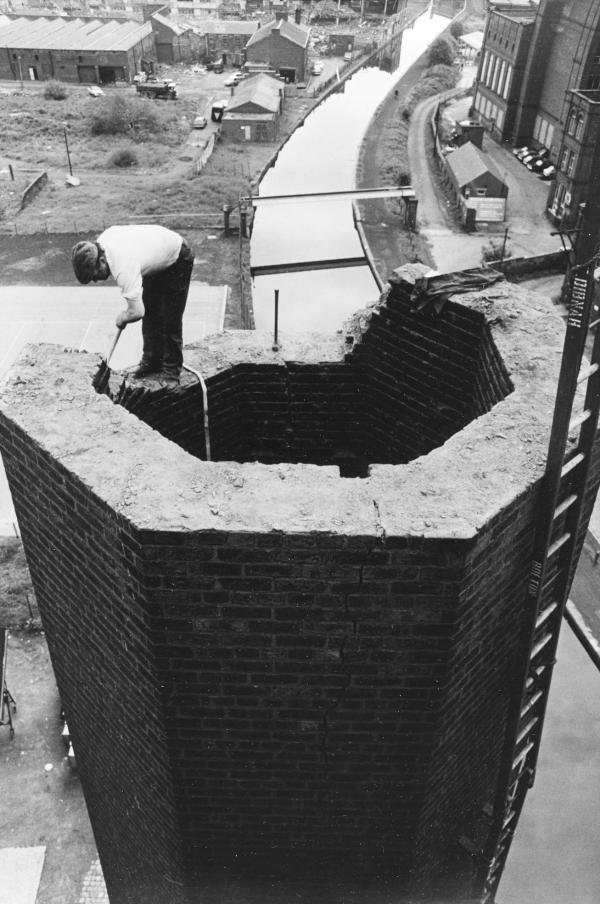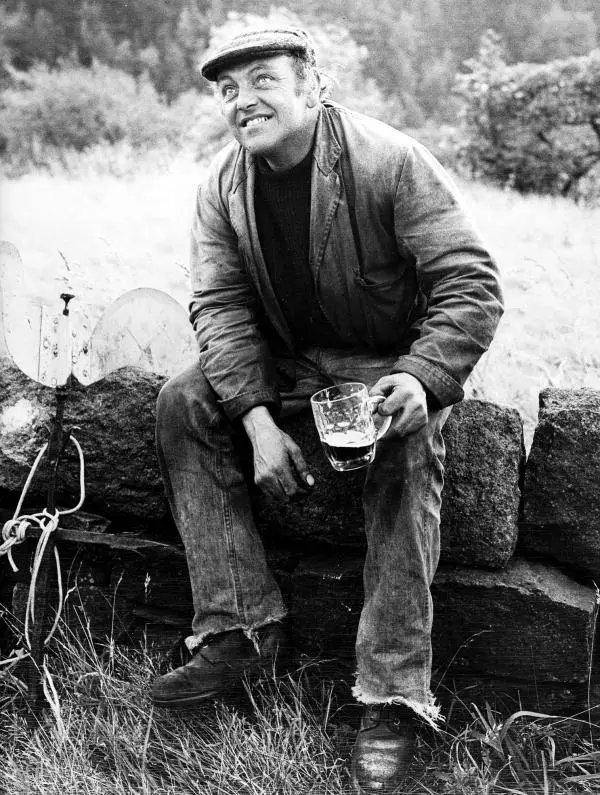Recently, when browsing the wilderness of Freeview’s streaming options, I noticed for the first time just how abrasive most television is. I do not mean merely the vulgar content, but the style and structure too: the din of background music, the quickly cut shots, the formulaic desensitisation generated by excess, artificial light, sound, colour, and emotion. We all know the drill: whether the show is Dragon’s Den or Kitchen Nightmares or the latest “relationship” cesspool, the manufactured tensions proceed along the same well-worn path. A controversial remark, accompanied by a symbol crash or violin scratch, proceeds an incongruous reaction shot of people gasping or grimacing. Television today, almost without exception, has completely forgotten the fundamental lesson of drama: if everything is exciting, nothing is.
So when, in my scrolling, the canned reactions gave way to a quiet, achingly normal little scene, I was captivated. I paused in my rapid clicking to watch two men chatting; one wore blue overalls and a flat cap, the other a suit. They were standing out in the open air, talking trains. Though I myself have no interest in locomotives, I couldn’t click away. After all the canned drama and vacuity of other channels, the passion and depth of knowledge on display here riveted me. I checked the TV guide. It read: Fred Dibnah’s Age of Steam.
Several hours of watching documentaries and reading articles online furnished me with the knowledge many of you had already: Fred Dibnah, MBE, the late and great, was a steeplejack. He was also a self-taught engineer, a documentarian, and a daredevil who brought down exactly ninety disused industrial chimneys using—with rare exceptions—nothing but a hammer and chisel. It is a gift to posterity that in 1979 a film crew made the first of what would eventually be dozens of documentaries in which Dibnah at first starred, and later narrated.
In that first film, Dibnah is obviously younger but still short, squat, and covered in soot. He is climbing ladders, which he has himself affixed, to the top of a great chimney-tower in order to dismantle it brick by brick. He uses no safety equipment apart from his own skill and guile, which served him so well that he says the worst accident he ever suffered was slipping on one of his daughter’s toys.
Midway through this first televised climb, Dibnah hooks his leg around a rung and surveys the vast world below as if it were his kingdom. “It’s like being on an airplane, you can see all the chimney stacks and steeples, and all the hills outside of town sticking up through all this cloud,” he says wistfully. Once he has summitted, he stands upon the chimney, confident in his footing and unperturbed by the great blackness into which he lobs dislodged bricks. All the while he smokes a cigarette and delivers a stream of consciousness to the cameraman.
Fred Dibnah’s acrobatics, agility, and courage are more entertaining that the finest circus act. But it was the sincerity, the simpleness, the realness that made Fred a remarkable character in the artificial and boring landscape of modern reality TV.
There is an old adage: “strong men create good times, good times create weak men, weak men create bad times, and bad times create strong men.” Often, however, we forget how long it takes for this wheel to spin all the way around. Just two years before Fred’s silver-screen debut, the punk band The Stranglers famously wailed, “What ever happened to all the heroes?” The punks’ dirge was premature. Though it was clear that the West was entering a state of rapid decline, there were still heroes to be found. There were giants of intellect and oratory in the public realm, from Barbra Castle and Tony Benn to Enoch Powell and Margaret Thatcher. Beyond the oaky halls of power, the occasional everyman struck an impressive figure. In the aftermath of two world wars and the Korean war, and the economic instability, rationing, and the routine of hard work, a special crop of people grew, people who even in their day-to-day tasks exhibited gravitas. It’s hard to imagine a television personality like Paul Daniels, a comedian like Bernard Manning, or an actor like Spike Milligan emerging from the exhausted soil of today’s culture. We are now entering the bad times.
That is not to say that there are no men and women of quality today. By no means. But decent men and women today must all too often labour in obscurity not merely despite, but because of their virtues—virtues that have no place in the public square. There are plenty of good folk, like the people who worked through the night on the railways in the aftermath of Storm Eunice to clear blockages and repair the lines; or the Poles and Romanians who drove to the Ukrainian border in recent weeks to help refugees; or the soldiers defending their homes. There are virtuous comedians today who cannot make it out of the comedy clubs and onto our screens. There are virtuous politicians who will never enter the mainstream because they do not observe the limits of the Overton window. Ru Paul’s Drag Race and Love Island dominate reality TV, and a world where those shows are considered mainstream has no room for the simplicity and clarity of a Fred Dibnah.
All this can be traced back at least partly to the changing mission of television: what used to be primarily about entertainment has become primarily a means of pushing a particular ideology. Television studios spend their time worrying about about “representation” and so-called “diversity,” instead of creating actually interesting content. The combination of diversity quotas and an increasingly narrow range of acceptable views (testified by the recent sacking of Maajid Nawaz from a prominent British news service for holding the view that COVID boosters are unnecessary) makes it impossible for genuinely creative work to flourish.
Diversity quotas add another, stifling layer of artifice to the already artificial world of television. In July 2021, ITV proudly boasted that, in line with its Diversity Acceleration Plan Report, 26% of onscreen leading roles were of Black, Asian, and minority backgrounds—double the percentage of BAME people in the general population. Amazon Studios’ minimum requirements for speaking roles is: 30% women or non-binary, 20% men from underrepresented racial groups, and 20% women and non-binary people from underrepresented races and ethnicities. Additionally, they aspire that 10% of roles should be given to gay individuals, and 10% to disabled individuals, and add, “Where we can have more people from underrepresented racial/ethnic groups, we will seek to do that.” The BBC’s most recent Diversity and Inclusion plan is similar; it aims for 8% of employees to identify as LGBT, despite the fact that less than 3% of the population identifying as LGBT, according to ONS. The BBC aims to have 20% BAME employees, though only 13% of the Country is BAME, and they are introducing BAME-only paid trainee programmes to meet this end.
The effect of all this is to make something so simple as a trip by Fred Dibnah to a Scottish foundry non grata on the television schedule. Today, no one could sell a show about Network Rail workers in the Highlands or comedians doing the circuit in Blackpool; it just would not be diverse enough.

“You can’t have a young man as a labourer. He’d wander off after a pretty lass, you see,” Fred says, explaining why he employs his aged and stony-faced work mate, who stolidly stacks bricks in the background. On a visit to the aforementioned foundry, the foreman remarks, “This is man’s work.” “Oh aye, yes,” Fred agrees. These are normal conversations, of the kind that take place countless times each day throughout the country; yet this very interaction is verboten for modern television. The invidiousness of wokeness has ostracised healthy human interaction from public platforms and displaced it with artifice and stage management. A comment like the foreman’s about “man’s work,” if aired today, would be accompanied by the all-too-familiar cymbal crash and the cutaway shot to an aghast onlooker. But the comment is true, and sound; it aligns with our everyday experience; the art that includes it serves as an ornament or supplement to life, rather than a heavy-handed ideological attempt to proselytize.
“Whatever happened to all the heroes?” For Fred, his were workers of a bygone age, immortalised on his bookshelf, wherein they were pictured with hammers slung over their shoulders and union shirts on their backs.
I rather think I should have been born a hundred years ago. Everybody says the bad old days and all that, but you look at the material that them people built and made even though they only got twenty-five bob a week. The end product, there’s no way a man could have made such wonderful stuff if he weren’t sick and tired. Everything then was a challenge, them cotton mills, the dark satanic mills which everybody says are bloody ugly, you go and look at the multi-story car park downtown and look at that!
For a man who spent his life looking to the horizon, it’s fitting that he foresaw the looming spectre of modernity was not all that was promised. But we mustn’t give up on the heroic, or imagine its only living expression is the picture books of old, because the reality is that they’re still out there, doing their day-to-day work, caring for their families and colleagues, attempting to carve out a life with a little meaning and beauty in the midst of struggle. They are there. But they won’t get a TV spot these days.





